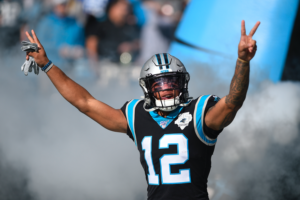It’s time for part 18 of the Grand List, or: the top one thousand players in pro football history who played a significant amount of time in the NFL, or something like that. In today’s section of the list, we have likely-to-be-controversial quarterback rankings, a wide range of defensive linemen, a feast of interior blockers, some versatile backs (of both the running and defensive persuasion), several receivers underrated because of the modern passing explosion, and three very different linebackers. Only three active players are featured today, but I will repeat my caveat from last time: because most of this list was presented prior to the 2020 season, last year’s performances—good and bad—will have no bearing on a player’s ranking moving forward. I have every intention of posting the list, in full, with updates, provided Chase lets me publish such a long post. Maybe I’ll just post it as a list and only write about new additions, not to be mistaken for New Editions (so no Mike Bivins). Alas, I have rambled too long.
Previous articles in the series
The Grand List, part 1: Includes honorable/special mentions and players 1000-990.
The Grand List, part 2: Includes players 989-965.
The Grand List, part 3: Includes players 964-940.
The Grand List, part 4: Includes players 939-901.
The Grand List, part 5: Includes players 900-876.
The Grand List, part 6: Includes players 875-851.
The Grand List, part 7: Includes players 850-810.
The Grand List, part 8: Includes players 809-780.
The Grand List, part 9: Includes players 779-750.
The Grand List, part 10: Includes players 749-700.
The Grand List, part 11: Includes players 699-650.
The Grand List, part 12: Includes players 649-600.
The Grand List, part 13: Includes players 599-550.
The Grand List, part 14: Includes players 549-500.
The Grand List, part 15: Includes players 499-450.
The Grand List, part 16: Includes players 449-400.
The Grand List, part 17: Includes players 399-350.
Festina, folks.

